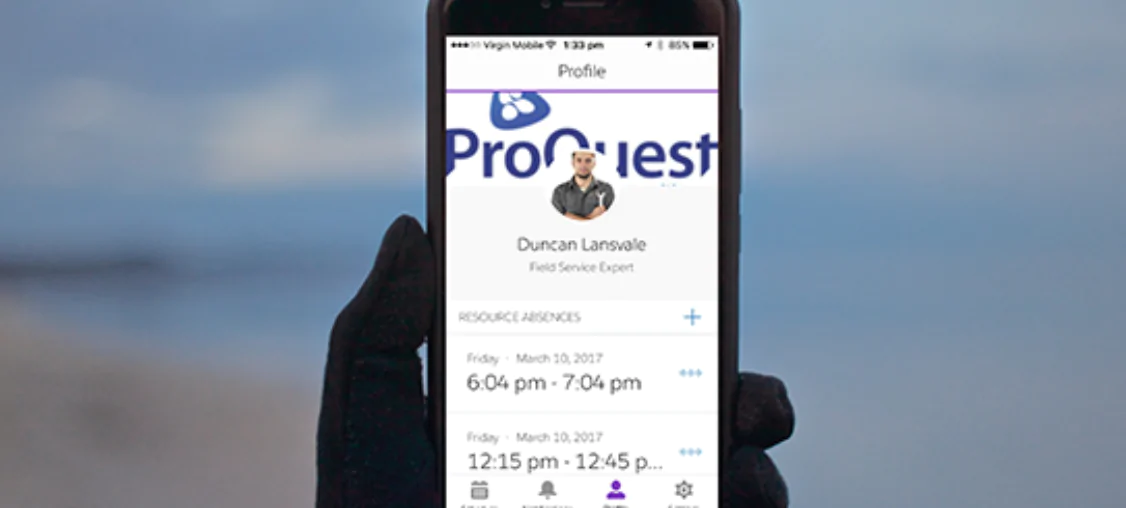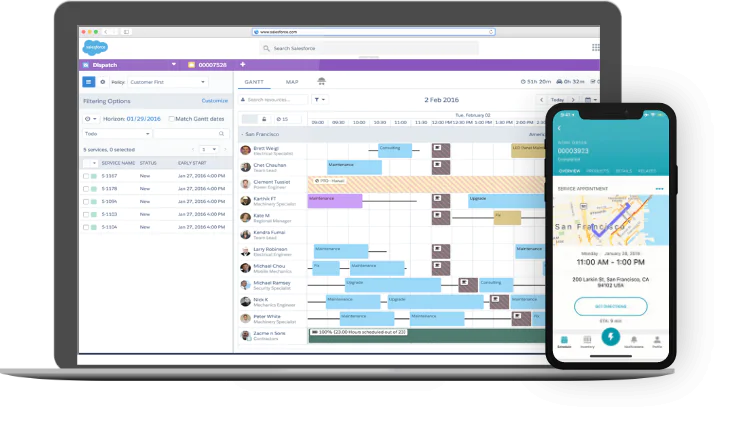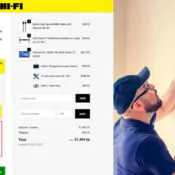
7 Reasons Why Salesforce Field Service Lightning will Dominate the Market in 2017
1) Salesforce is everywhere.
When Salesforce decide to make a marketplace their own, they don’t wait around – they take aim and fire. At ProQuest we first came across Field Service Lightning (FSL) at Dreamforce about nine months ago. Even though Field Service Lightning was in its infancy, Salesforce won a competitive tender in which we were participating. Their existing presence and product coverage within a major customer gave them established relationships with senior stakeholders and they were able to articulate the FSL solution within the context of the overall Salesforce platform, thus showing the customer a 360 degree view of their sales and service operations. With a market capitalisation of $58 billion and executing some five billion transactions per day (https://status.salesforce.com/performance) – this market presence will be a key competitive differentiator time and time again.
2) Salesforce Field Service Lightning has an awesome scheduling solution.
There are many facets to a comprehensive Field Service platform. Let’s focus firstly on a very nice implementation of the schedule and dispatch functionality in Salesforce Field Service Lightning (FSL) that makes for an eye-opening demonstration, no matter which prospective customer is in the room.
Scheduling can be done manually or automatically. If it’s the latter, just watch as your jobs get slotted into the calendar one by one like magic. All you need to do is set up the system with appropriate data concerning your work orders and your field staff, their locations, their skills, their rosters, and other business rules that might apply – then watch the auto-scheduling do its magic.

3) Salesforce Field Service Lightning replaces nasty overgrown spreadsheets.
Microsoft Excel ain’t no scheduling solution. Released 32 years ago, Excel quite likely still runs parts of your business. There’s no shame in that. Big macro-ridden things that fill those ugly crevices between your front office and your back office. Noble attempts to take care of the void where no application easily does the job. To boldly go where no decent application has gone before?
Scheduling and dispatching hundreds of field technicians, or even just twenty field technicians, is a monumental challenge without a purpose-built application. Excel may be your Swiss army knife to fashion some kind of answer, but it’s unlikely to be integrated with the rest of your sales and service operations. It’s likely driving your employees and your customers mad. Goodness knows, we’ve seen some spreadsheets and some brave operational staffers trying their level best – but there’s a better way. Its name is Field Service Lightning.
4) Salesforce Field Service Lightning has a slick mobile app and it will only get better.
We’ve already covered this in a previous blog post. Our team loves working with the FSL app, and we love the reaction we get from our customers when they see such a cool user experience. We know from our activities of the last three years that we have to implement field solutions that get enthusiastic adoption in the field, across all demographics of field technicians.
5) The roadmap is impressive.
ProQuest has 25,000 hours of field service consulting under its belt from three years in the marketplace. We’ve implemented some highly automated field service solutions on the Salesforce platform. We’ll cover specifics in future blog posts. What we can say here is that when we saw the Field Service Lightning roadmap presentation at Dreamforce 2016, we realised that Salesforce has everything fully in its sights and shows a comprehensive understanding of the field service industry.
6) A Return on Investment is achievable within a few short months.
Give ProQuest a call and ask us to show you the Field Service Lightning application. You will see real potential for reduced headcount and delighted customer experience. Reduce back office headcount by centralising your scheduling and dispatch function. Close the loop between head office and the field so that first time fix rates improve. Watch utilisation increase, as overtime goes down, and service contracts are renewed. Ask us to deploy a Minimum Viable Product within weeks to build confidence and momentum. From there keep refining and extending your solution for further financial gains. Have fun and repeat.
7) Partners like ProQuest are right behind Salesforce Field Service Lightning.
ProQuest unleashes the power of Salesforce. Innovation is one of our core values, and we strive to be bold, creative and modern. We love working with Salesforce, and we love delivering quality systems through our disciplined Scrum implementation methodology. Our FSL reference customers can speak to our passion, execution and commitment.
Contact us to learn more about FSL or discuss your current Salesforce needs.











